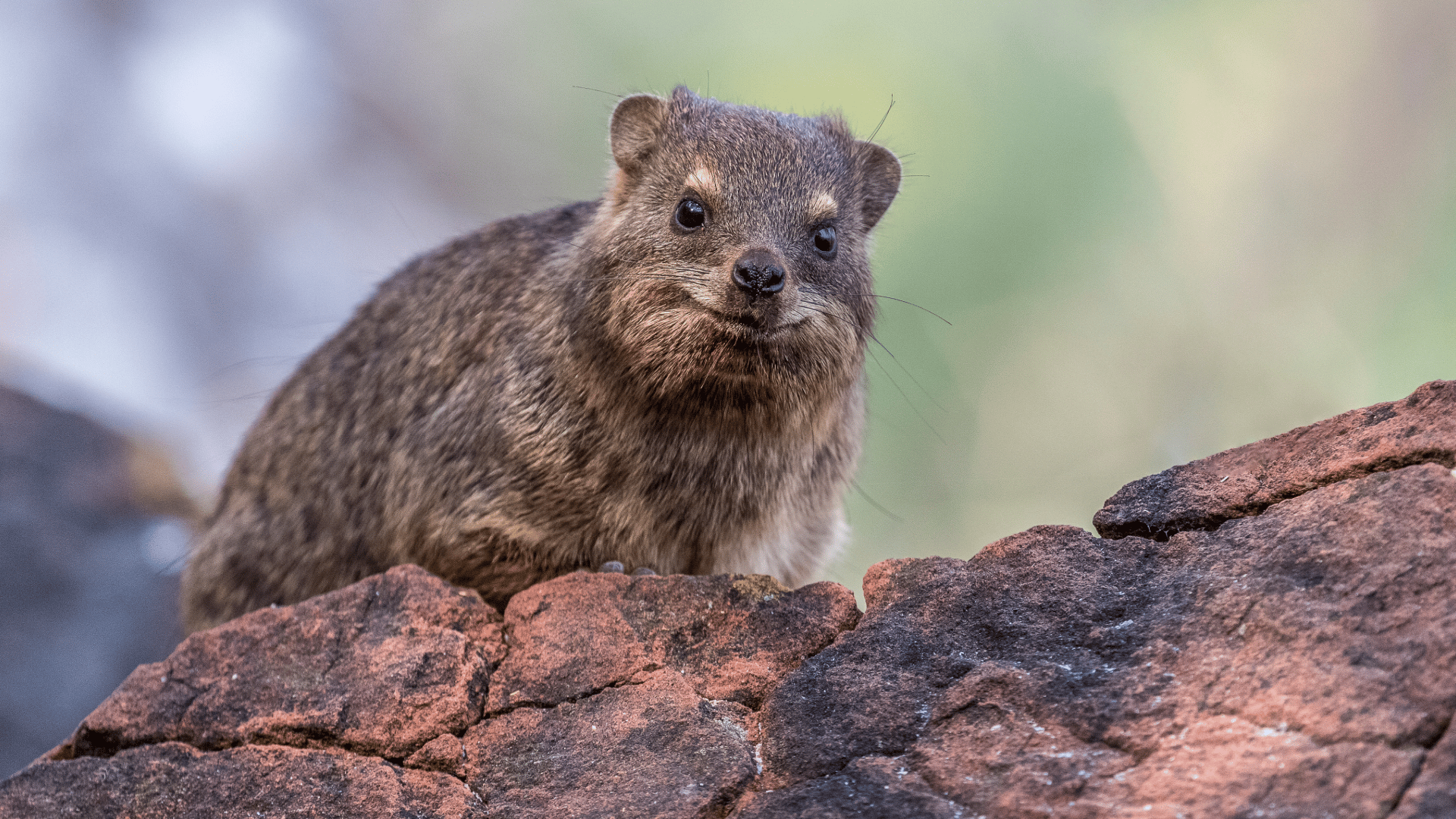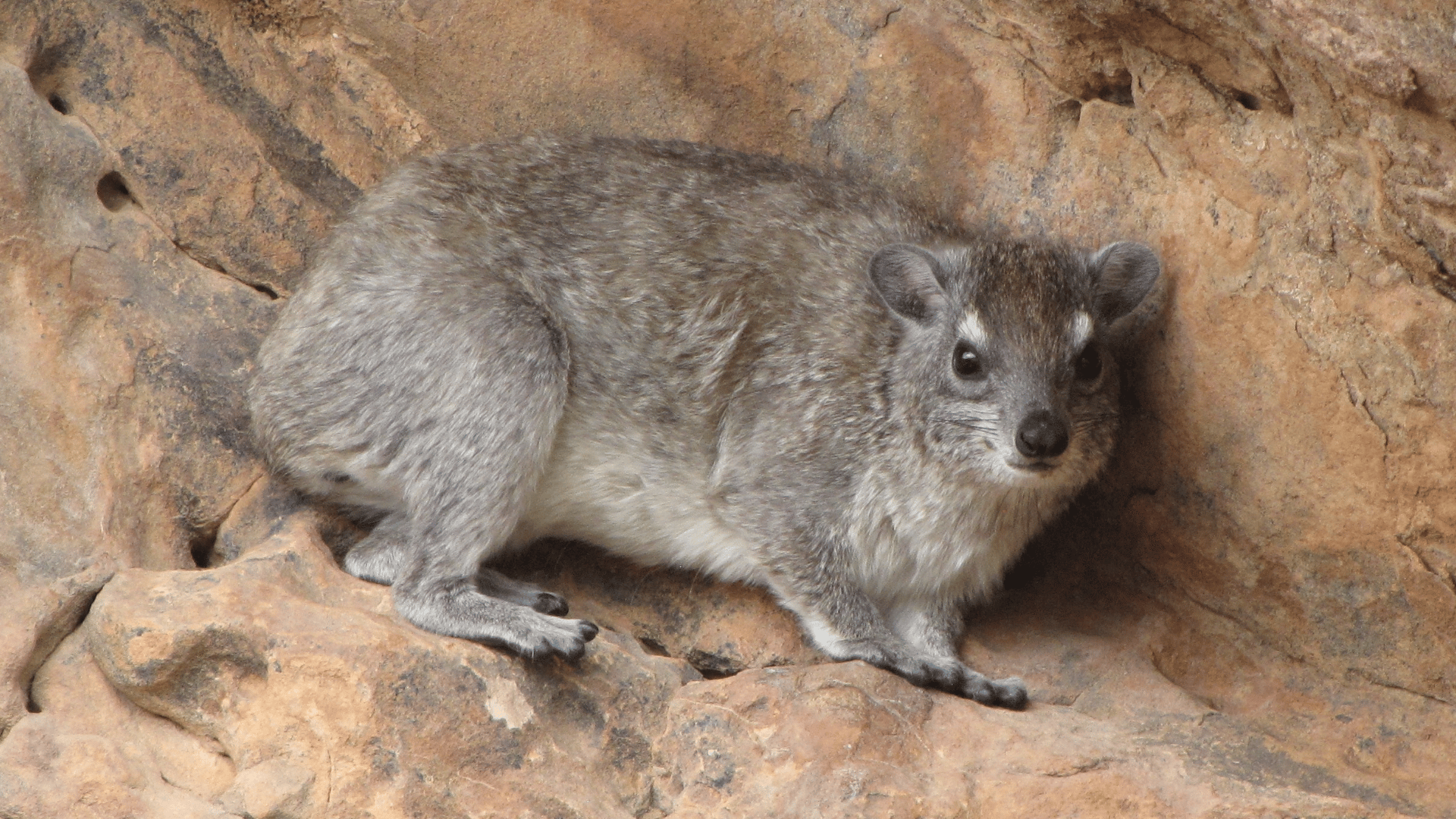
This is the hyrax, a small African mammal also called the “rock rabbit” or dassie. It may look like a rodent, but its closest relatives are elephants and manatees. Native to Africa and parts of the Middle East, these herbivores belong to the order Hyracoidea.
Hyraxes typically weigh 2 to 5 kilograms (4 to 11 pounds) and measure 30 to 70 centimeters (12 to 28 inches) in length. They have rounded bodies covered in short brown or gray fur, very short tails that are often hidden, and hooflike nails on their toes instead of claws. Most have four toes on each front foot and three on each hind foot, except for a grooming claw on the inner back toe that acts like a built-in comb.

Their rubbery, moistened footpads work like suction cups, helping them grip rock surfaces and climb steep terrain. Even their eyes are adapted to bright light. The iris extends over the pupil like a natural sunshade to reduce glare from above.
Hyraxes are typically found among rocky outcrops, boulder fields, or scrubby hills where they can dash into crevices to avoid predators. They live in environments ranging from dry savannas and rainforests to alpine zones over 4000 meters (13,000 feet) high.
Types of Hyrax

Rock hyrax
There is more than one kind of hyrax. Species are traditionally grouped into two categories: rock hyraxes and tree hyraxes. The most widespread is the rock hyrax (Procavia capensis) found across eastern and southern Africa and along the coast of the Middle East. It has grizzled brown fur with yellowish or gray tones and a dorsal scent gland on its back, usually covered by longer black or yellowish hairs.

Yellow-spotted hyrax
A close cousin is the yellow-spotted hyrax (Heterohyrax brucei), sometimes called the bush hyrax. It is slightly smaller, with a more pointed nose, a pale patch above the eye, and a lighter-colored dorsal gland. These hyraxes are often seen resting on rocks in mixed groups, although they do not interbreed.

Tree hyrax
Tree hyraxes, in the genus Dendrohyrax, live in forests. They tend to be solitary, active at night, and are rarely observed in large groups. Their fur is longer and softer, adapted to the cooler, shaded environment. Like the others, they have a dorsal gland, but theirs is usually marked with a white or yellow spot. In many forests, people hear tree hyraxes long before they see them. Their loud calls at night are sometimes described as eerie or haunting.

Tree hyrax
The number of recognized hyrax species has changed over time. For many years, about eleven were described. By 2013, taxonomists had grouped most into four main species: the rock hyrax, the yellow-spotted hyrax, and two tree hyrax species. Some experts now split the tree hyraxes further into eastern and western species. In 2022, researchers identified a new tree hyrax in West Africa, distinguished by its unique barking calls. In general, hyraxes can be grouped into two broad types: those that live on rocky outcrops and those that live in forest trees.
A Family Resemblance to Elephants

African elephant

Manatee
The closest living relatives of hyraxes are elephants and manatees. All three are part of an ancient African group of mammals called Afrotheria. During the Eocene, tens of millions of years ago, hyrax ancestors were among the dominant herbivores in Africa. They filled roles ranging from mouse-sized climbers to species as large as horses. Some, like the fossil Titanohyrax, may have weighed up to 1,300 kilograms (about 2,870 pounds). That is roughly the size of a rhinoceros. These giant forms disappeared, likely outcompeted by antelope, while smaller species survived and still show traits that link them to elephants.
This post is for paid subscribers
Get full access to this post and everything else we publish.
Upgrade to paid